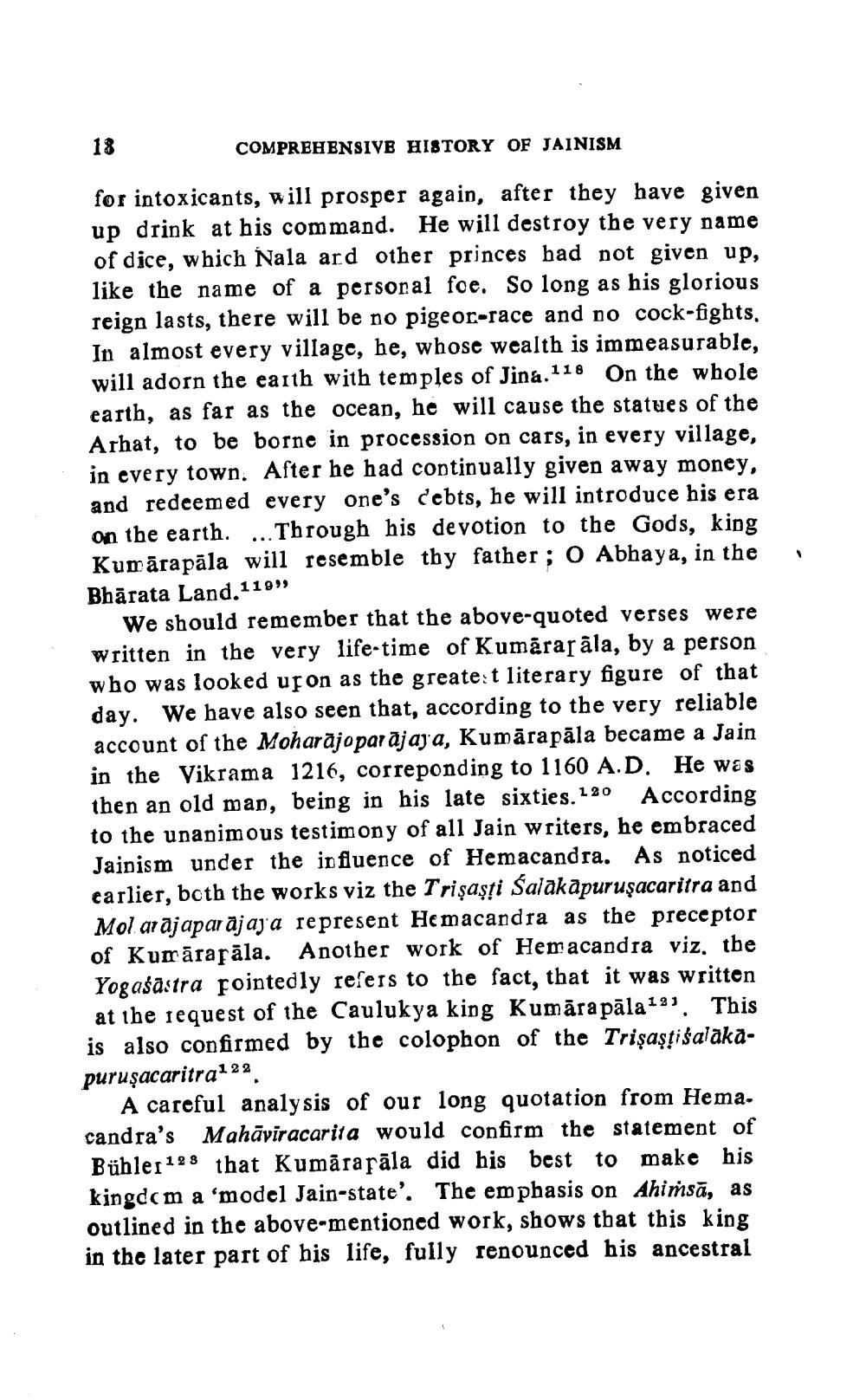________________
COMPREHENSIVE HISTORY OF JAINISM
for intoxicants, will prosper again, after they have given up drink at his command. He will destroy the very name of dice, which Nala ard other princes had not given up, like the name of a personal foe. So long as his glorious reign lasts, there will be no pigeor-race and no cock-fights, In almost every village, he, whose wealth is immeasurable, will adorn the earth with temples of Jina. 118 On the whole earth, as far as the ocean, he will cause the statues of the Arhat, to be borne in procession on cars, in every village, in every town. After he had continually given away money, and redeemed every one's debts, he will introduce his era on the earth. ... Through his devotion to the Gods, king Kumārapāla will resemble thy father; O Abhaya, in the Bhārata Land.11
We should remember that the above-quoted verses were written in the very life-time of Kumārasāla, by a person who was looked upon as the greate:t literary figure of that day. We have also seen that, according to the very reliable account of the Moharājoparājaya, Kumārapāla became a Jain in the Vikrama 1216, correponding to 1160 A.D. He was then an old man, being in his late sixties. 1 20 According to the unanimous testimony of all Jain writers, he embraced Jainism under the influence of Hemacandra. As noticed earlier, both the works viz the Trişașți Šalakāpuruşacaritra and Molarājaparājaya represent Hemacandra as the preceptor of Kumārasāla. Another work of Hem acandra viz. the Yogaśāstra pointedly refers to the fact, that it was written at ihe request of the Caulukya king Kumāra pāla 12). This is also confirmed by the colophon of the Trişaşțišalakapuruşacaritra122
A careful analysis of our long quotation from Hema. candra's Mahāviracarita would confirm the statement of Bühler 128 that Kumāra sāla did his best to make his kingdom a 'model Jain-state'. The emphasis on Ahiṁsā, as outlined in the above-mentioned work, shows that this king in the later part of his life, fully renounced his ancestral




